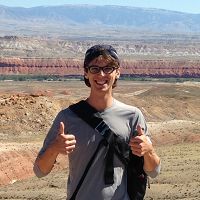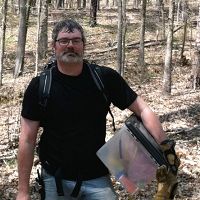Chen et al., 2016
pSIN: a scalable, Parallel algorithm for Seismic INterferometry of large-N ambient-noise data
Chen, P., Taylor, N.J., Dueker, K.G., Keifer, I.S., Wilson, A.K., McGuffy, C.L., Novitsky, C.G., Spears, A.J., Holbrook, W.S. (2016)
Computers & Geosciences 93: 88-95
-
Sierra, GRAD STUDENT
-
Boulder, Calhoun, Eel, Reynolds, Sierra, COLLABORATOR
Abstract
Seismic interferometry is a technique for extracting deterministic signals (i.e., ambient-noise Green's functions) from recordings of ambient-noise wavefields through cross-correlation and other related signal processing techniques. The extracted ambient-noise Green's functions can be used in ambient-noise tomography for constructing seismic structure models of the Earth's interior. The amount of calculations involved in the seismic interferometry procedure can be significant, especially for ambient-noise datasets collected by large seismic sensor arrays (i.e., “large-N” data). We present an efficient parallel algorithm, named pSIN (Parallel Seismic INterferometry), for solving seismic interferometry problems on conventional distributed-memory computer clusters. The design of the algorithm is based on a two-dimensional partition of the ambient-noise data recorded by a seismic sensor array. We pay special attention to the balance of the computational load, inter-process communication overhead and memory usage across all MPI processes and we minimize the total number of I/O operations. We have tested the algorithm using a real ambient-noise dataset and obtained a significant amount of savings in processing time. Scaling tests have shown excellent strong scalability from 80 cores to over 2000 cores.
Citation
Chen, P., Taylor, N.J., Dueker, K.G., Keifer, I.S., Wilson, A.K., McGuffy, C.L., Novitsky, C.G., Spears, A.J., Holbrook, W.S. (2016): pSIN: a scalable, Parallel algorithm for Seismic INterferometry of large-N ambient-noise data. Computers & Geosciences 93: 88-95 . DOI: 10.1016/j.cageo.2016.05.003
 This Paper/Book acknowledges NSF CZO grant support.
This Paper/Book acknowledges NSF CZO grant support.
Explore Further


